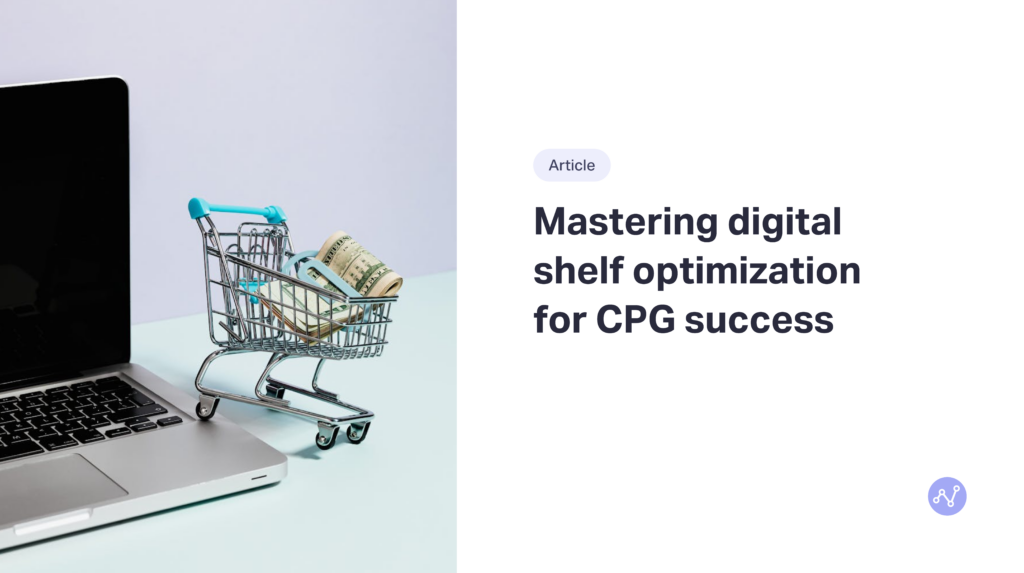Mastering digital shelf optimization for CPGs.
5 minute read
In the ever-evolving landscape of consumer packaged goods (CPG), staying ahead isn’t just beneficial—it’s imperative. As ecommerce grows, understanding and mastering digital shelf optimization becomes a crucial component for any brand’s success. This comprehensive guide delves into the essence of digital shelf optimization, offering CPG professionals nuanced insights and strategies to harness its full potential.
Understanding digital shelf optimization
Digital shelf optimization refers to the array of strategies and technologies employed to ensure your products are prominently displayed and appealing on ecommerce platforms. In this digital era, your product’s online presence is akin to its placement on a physical store’s shelf. Digital shelf optimization ensures your products are not just visible but also compelling enough to attract and retain consumer interest.
The critical role of digital shelf optimization in the CPG industry
The importance of digital shelf optimization in the CPG sector cannot be overstated. With the digital marketplace becoming more saturated, it ensures that your products stand out, thereby enhancing brand recognition and driving consumer loyalty. Effective strategies can significantly boost your product’s search rankings, engage potential customers, and escalate sales figures, particularly on key platforms like Amazon.
Effective strategies for optimizing your digital shelf
To maximize your digital shelf presence, consider the following proven strategies:
Enhancing product content
Harnessing ratings and reviews
Leveraging analytics and retail media networks
Mastering search optimization
Keeping an eye on competitors
Implementing and evolving your strategy
To effectively implement digital shelf optimization, it’s crucial to establish a cross-functional team that aligns on goals, strategies, and metrics. Here’s a step-by-step approach:
Conducting a digital shelf audit
Executing your strategy
Leveraging retail media networks
Developing a strategic plan
Emphasizing collaboration and adaptability
In the competitive realm of CPG brands, digital shelf optimization is not just a beneficial strategy—it’s a critical component of your brand’s online success. By focusing on robust content, search optimization, consumer feedback, competitor analysis, and leveraging analytics and retail media networks, you can significantly elevate your brand’s digital presence. Remember, the landscape of digital retail is constantly evolving, and so should your strategies. Stay informed, be proactive, and watch your CPG brand flourish on the digital shelf.
By adopting these comprehensive strategies and maintaining a proactive approach, CPG ecomm managers can not only navigate but also excel in the digital marketplace.



